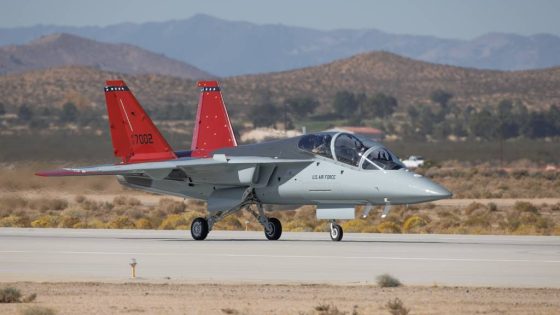Boeingâs defense unit recorded $222 million in losses in the first quarter of 2024 on two of its main fixed-price development programs, the KC-46A Pegasus refueling tanker and the T-7A Red Hawk trainer, the company announced Wednesday.
The KC-46 suffered a loss of $128 million, Chief Financial Officer Brian West told investors in an earnings call, and the T-7â²s losses amounted to $94 million. In documents submitted to the U.S. Securities and Exchange Commission, the American firm said the KC-46â²s loss primarily stemmed from factory disruptions caused by supply chain constraints, and the T-7â²s loss came from higher-than-expected production costs.
It marks the second quarter in a row in which Boeing lost money on those programs. In the last quarter of 2023, the company reported $139 million in losses combined on the KC-46, T-7 and MQ-25 Stingray refueling drone. However, those losses were small enough that the company did not have to publicly disclose them.
The latest figures bring the KC-46â²s cumulative losses to at least $7.1 billion.
The T-7 program was also slowed by problems with the quality of some jet parts, which Boeing received from multiple suppliers. Some parts were sent back to their original manufacturer to be fixed, Boeing told Defense News in February, but the quality issues delayed the planned start of the T-7â²s low-rate initial production by several months, to mid-2024.
Overall, Boeing Defense, Space and Security performed stronger than the entire company in the first quarter of 2024, which was dragged down by its struggling commercial aviation sector.
Boeing has been under intense scrutiny and criticism for months after an alarming in-flight emergency when a door blew out mid-flight from one of its 737 Max passenger aircraft.
Boeing recorded nearly $16.6 billion in revenue in the first quarter of 2024, an 8% decline from the $17.9 billion the company pulled in a year earlier.
It lost $355 million in the first quarter of 2024, although that was less than the $425 million loss the company suffered in the first quarter of 2023. Much of that decline came from the companyâs commercial airplane sector â revenues for which dropped 31%, from $6.7 billion a year ago to $4.7 billion.
âOur first quarter results reflect the immediate actions weâve taken to slow down 737 production to drive improvements in quality,â Boeing CEO Dave Calhoun said in a statement. âWe will take the time necessary to strengthen our quality and safety management systems and this work will position us for a stronger and more stable future.â
Boeingâs defense sector brought in nearly $7 billion in revenue in the first quarter, up 6% from a year earlier. The company also reported $151 million in profits, which represented a 2.2% profit margin and a turnaround from the $212 million loss a year ago.
West told investors the company is on track to get the defense sector back to profits in the high single digits in 2025 or 2026. The Pentagonâs fiscal 2025 budget proposal shows âstrong demandâ for Boeing products, he said.
âThe products are performing in the field, and weâre confident that our efforts ⦠will return this business to performance levels that our investors recognize,â West said.
West noted the Air Forceâs flight tests on the T-7 are âproceeding well,â and that the service wrapped up climate testing in February at Eglin Air Force Base, Florida. During that testing at the McKinley Climatic Laboratory, the Air Force subjected the T-7 to extreme weather conditions such as severe cold and heat, winds, dust, freezing rain, salt spray, and snow.
Boeing is making progress and âretiring risk every dayâ on its fixed-price programs that have struggled, West said, particularly on the VC-25B Air Force One program.
Boeing âwill move our way through [building the pair of new Air Force Ones], and we will deliver two airplanes, and then that will be over as a program,â West said.
Stephen Losey is the air warfare reporter for Defense News. He previously covered leadership and personnel issues at Air Force Times, and the Pentagon, special operations and air warfare at Military.com. He has traveled to the Middle East to cover U.S. Air Force operations.
Source Agencies



